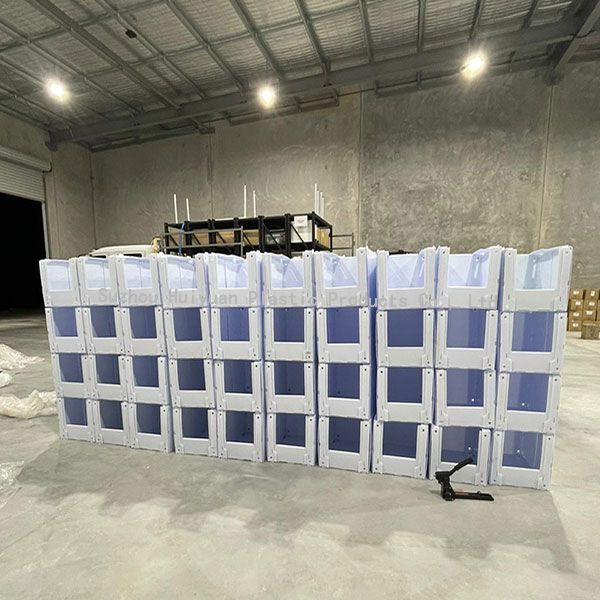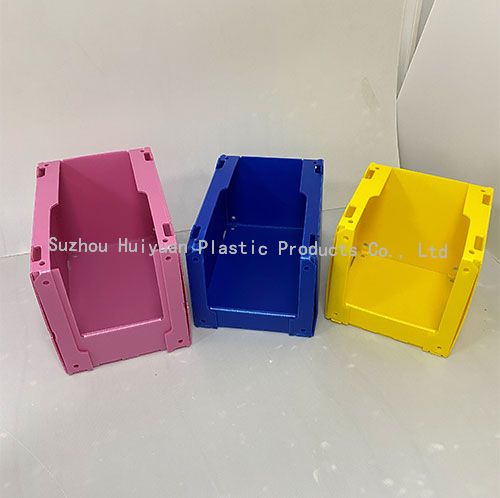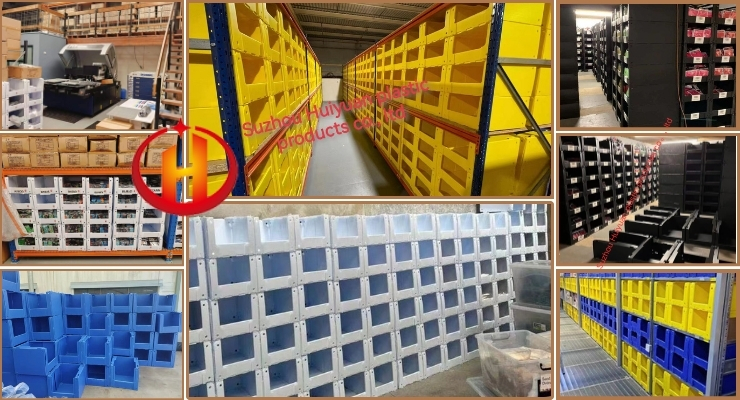©Copyright 2019 Suzhou Huiyuan Plastic Products Co., Ltd All rights reserved. Terms and Conditions Designed by iwonder.cnSite Map
In the ever-evolving world of logistics, warehousing, and packaging, the need for durable, cost-effective, and reusable storage solutions continues to grow. One product that has gained widespread adoption in recent years is the huge plastic storage box. Used extensively across a variety of industries, especially in packaging and transportation, these storage containers have become essential for managing goods efficiently and safely. But what exactly are they, what makes them unique, and why are they preferred over traditional alternatives?
In this comprehensive guide, we will explore the core features, applications, benefits, and market trends surrounding huge plastic storage boxes in the packaging and transport industries.

A huge plastic storage box is typically a high-capacity, industrial-grade container made of polypropylene (PP), high-density polyethylene (HDPE), or similar polymers. Designed to handle large volumes or heavy items, these boxes are much larger than standard household plastic containers and built to withstand the rigors of industrial use.
Core features include:
Robust Construction: Reinforced walls, sturdy bases, and heavy-duty lids or locking systems.
Stackability: Most models are designed to be stackable to save floor space during storage or transport.
Weather & Chemical Resistance: These boxes can resist extreme temperatures, UV exposure, and corrosive substances, making them suitable for both indoor and outdoor use.
Ease of Cleaning: Smooth interior surfaces make cleaning and sanitization straightforward, which is especially important in food, pharmaceutical, or sensitive goods sectors.
Customization Options: Some manufacturers offer branding, color coding, or RFID tagging for easier inventory control and traceability.
The size and strength of the huge plastic storage box make it an optimal choice for high-volume logistics operations.
The huge plastic storage box finds its primary utility in packaging and transportation due to its unmatched efficiency and protection features. Below are the most common scenarios where these containers are indispensable:
In large warehouses, managing hundreds or thousands of SKUs (Stock Keeping Units) requires a systematic approach. These boxes are often used for:
Organizing components and raw materials
Storing finished goods awaiting shipment
Creating mobile storage units when mounted on wheels or used with forklifts
When shipping bulk goods—especially sensitive or high-value items—companies rely on sturdy containers. Huge plastic storage boxes are used for:
Export packaging in sea and air freight
Consolidating multiple small cartons into a single unit for easier handling
Reducing damage during transit by offering better protection compared to cardboard
Manufacturers in the automotive and electronics sectors use these boxes to:
Transport intricate parts from suppliers to the assembly lines
Return packaging for reusable parts or tools
Manage just-in-time (JIT) inventory processes
In food distribution chains, hygiene and safety are paramount. Plastic storage boxes are commonly found in:
Transporting vegetables, fruits, meats, and seafood
Cold-chain logistics requiring containers to perform in refrigerated environments
Post-harvest processing units and collection centers
Why do logistics professionals increasingly prefer plastic over traditional materials like wood, cardboard, or metal?
A cardboard box may last for one or two uses before becoming unusable, while a huge plastic storage box can last for years. They can withstand drops, vibrations, moisture, and pressure with minimal damage.
Though the initial cost may be higher, reusable plastic boxes offer better ROI in the long run due to:
Reduced replacement frequency
Lower maintenance costs
Less waste and fewer compliance issues
Sustainability is a growing concern in the packaging industry. Most huge plastic storage boxes are:
Made from recyclable materials
Reusable for hundreds of cycles
Contributing to reduced landfill waste compared to single-use packaging
They are designed ergonomically with handles, corner reinforcements, and optional lids. Some variants are even compatible with robotics and automation systems for safer and faster material handling.

Before selecting a box, logistics managers need to evaluate specific criteria to ensure compatibility with their operational needs.
Determine the maximum load the box must handle. Boxes vary from 50 liters up to 1000+ liters and should be matched with the average weight of contents.
Some huge plastic storage boxes come with built-in wheels, dollies, or are designed to be used with pallet jacks or forklifts. Assess how frequently the boxes need to be moved.
If space-saving is a priority, choose stackable or nestable models. Nestable boxes can be inserted into each other when empty, saving up to 75% of return shipping space.
For certain agricultural or food-based applications, ventilated boxes are essential to prevent moisture buildup. Drainage holes or mesh walls can also be considered.
In some industries like food or pharmaceuticals, boxes must comply with FDA, EU, or ISO regulations. Certifications ensure safety for direct food contact and sterile conditions.
Manufacturers and packaging companies are responding to client demands by offering customization options such as:
Color Coding for Sorting
Company Logos or Barcode Labels
Tamper-Evident Lids
UV Stabilization for Outdoor Use
Antistatic Versions for Electronics
A customized huge plastic storage box adds not only brand identity but also operational efficiency to the logistics chain.
The global demand for reusable packaging solutions is rising, driven by the circular economy model and increasing e-commerce. As a result, innovations in this space include:
Collapsible Huge Plastic Storage Boxes: Save space when not in use or during reverse logistics
IoT-Enabled Boxes: Integration with RFID chips or GPS trackers for asset tracking and inventory automation
Hybrid Materials: Combining rigid plastic with metal reinforcements for ultra-heavy-duty applications
Biodegradable Plastic Alternatives: Emerging materials made from plant-based resins
In regions like North America, Europe, and parts of Asia, logistics companies are gradually replacing wooden crates and metal containers with huge plastic storage box alternatives due to these technological advancements.

In summary, the huge plastic storage box is a game-changer for the packaging and transport industry. Its strength, durability, and customizability make it ideal for businesses seeking to improve efficiency, reduce costs, and enhance safety in their operations. Whether used for shipping electronics, storing food products, or organizing warehouse inventory, these boxes offer unparalleled value.
As industries continue to prioritize sustainability and cost-efficiency, the role of large-format plastic storage containers will only expand further. If you're in the logistics, agriculture, retail, or manufacturing sectors, it's worth investing in high-quality huge plastic storage boxes that align with your operational goals.
By continuing to use the site you agree to our privacy policy Terms and Conditions.